"Men who wish to know about the world must learn about it in its particular details." -Heraclitus
This past week at Starts With A Bang put on quite a show, and you -- as always -- didn't disappoint. If you missed anything, here's what went on:
- Learning to chill (a guest post from Paul Halpern),
- Does a black hole have a shape? (a fascinating Astroquizzical from Jillian Scudder),
- Muons, relativity & a new record? (for Ask Ethan),
- Keep the Universe going (introducing our Patreon, for our Weekend Diversion),
- Sunsets from space (for Mostly Mute Monday),
- Pluto's unique moons, and
- What would you see as you fell into a black hole? (for a bonus Throwback Thursday).
In addition to these, I had two new pieces over at Forbes:
- New Record Set For Brightest Galaxy In The Universe, and
- The Voyage No One Wants To Take: Why The Hyperloop Is A Catastrophe-Waiting-To-Happen.
You all said so much and I don't want to waste any time, so it's onto your Comments of the Week!
Image credit: Courtesy of http://science.dodlive.mil/.
From Denier on the (observable) Universe's finiteness: "I find the idea of there being a finite amount of thoughts that can occur in the universe to be a serious weight. Some really stupid things can occupy my thoughts. To think I am wasting one of the universes finite thought count on American Ninja Warrior is… awesome. After thinking about it, I’m not conserving anything. Go Jessie Graff!! You guys need to stop wasting the universes’ thoughts on your stupid stuff."
When you think about it, it couldn't be any other way. To have a thought as we understand it, you need for at least one electron -- a particle within our Universe -- to travel from one location to another. Everything we understand as a thought has, at its root, an electrical signal, and that involves information transfer. And yet, you need to have something happen to cause that electron to transfer: you need a difference in energy between the past state and the future state to make it happen.
And that takes something out of your Universe. We have a huge observable Universe at our disposal, with some 10^80 electrons and protons, a billion times as many photons and neutrinos and antineutrinos, who-knows how many particles of dark matter, and a finite amount of dark energy atop it all. And yet, the total amount of energy within it is finite. The total amount of energy that can be released is finite. And so even given an infinite amount of time, the total number of "thoughts" that our Universe will experience is finite as well. So enjoy your Ninja Warrior, Denier, I know I will.
Or, as Wow so eloquently put it:
"It’s only a waste if you wanted to do something else."
From Alex on black holes: "Are anti-matter black holes possible theoretically? An encounter of a matter black hole with the anti-matter one would probably be the most violent event imaginable."
This is one of the most important components of something you need to understand in order to both "get" black holes, and also to understand why there is such a thing as an information paradox with black holes. You see, there are only a few things black holes "remember" from before their creation:
- what the total amount of energy (mostly mass) was that went into creating them,
- what their total electric charge is (and, if magnetic charge exists, what that is; possibly color-charge as well),
- and what their angular momentum (i.e., spin) is.
That's it! It doesn't care if you were made from neutrons, neutrinos, atoms, baryons, leptons, or even matter or antimatter. All it remembers is what the mass of the things that went into it were.
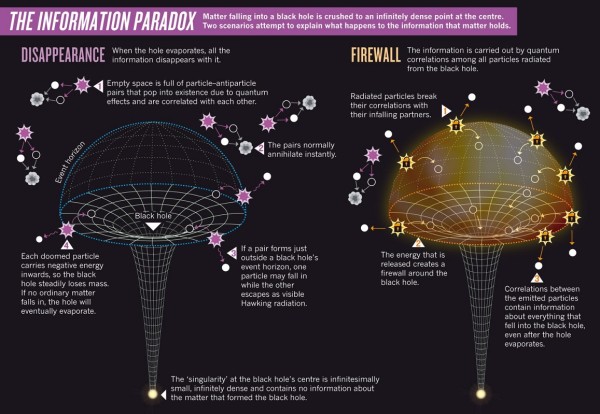 Image credit: Nature 496, 20–23 (04 April 2013) doi:10.1038/496020a, via http://www.nature.com/news/astrophysics-fire-in-the-hole-1.12726.
Image credit: Nature 496, 20–23 (04 April 2013) doi:10.1038/496020a, via http://www.nature.com/news/astrophysics-fire-in-the-hole-1.12726.
This should bother you! If you had a neutron star and an anti-neutron star -- which you could create simply by having enough anti-hydrogen in one place to make a massive enough star out of antimatter -- and collided them, that would be a catastrophic release of energy, on the order of ~10^48 Joules of energy. That's about 10,000 times the energy of a supernova.
And yet, if you increased the mass of each one just a little bit, and made a black hole (and an "anti-black hole"), they'd just merge together to make a larger black hole. The "anti-black hole" is now indistinguishable from the regular black hole. And that probably doesn't feel right to you, but that's the way things are, according to the physics we understand today.
Image credit: Fermilab, via http://www.symmetrymagazine.org/breaking/2009/11/19/what-a-muon-collide….
From Omega Centauri on muon colliders: "As the particles in the beam, as measured in the earth’s frame, still decay the beam itself will be radioactive, giving off high energy electrons (or positrons) along its pathway, there will be inevitable leakage of these electrons. How much of an obstacle is this path radiation expected to be?"
The nice thing about magnets that bend charged particles in a circular shape is that the magnets must be tuned to curve particles of a very specific charge-to-mass ratio in a path of a particular radius at a particular energy/momentum. Your electrons will be moving with only a fraction of the muon's pre-decay momentum (because the momentum is split also among the neutrino and antineutrino decay products), a greater velocity (because the electron's mass is over 200 times less than the muon's), and -- most importantly -- a significantly different charge-to-mass ratio.
Whenever a muon decays, the electron will quite rapidly slam into the collider wall. So long as it doesn't do so in the detector zone (and even if it does, it will be easy to separate out due to its small transverse momentum), and so it won't confound our collider results.
Sometimes, other commenters do the work for me. Michael Kelsey, in this case, beat me to the punch:
"In a muon collider storage ring, the electrons will have the wrong mass (and hence the wrong momentum) to be properly bent by the magnets. Instead, they’ll hit the outward sidewalls, which will consequently need to be shielded and extensively cooled, probably with an “alcove” design (a horizontal extension on the outward bend side).
This situation is quite similar to typical electron storage rings (such as the SLAC B-Factory, where I worked on the BaBar detector), which have to deal with the [synchrotron] radiation from the electrons."
Image credit: screenshot from our Patreon: https://www.patreon.com/startswithabang.
From RagTag Media on my new Patreon venture: "Aren’t ya suppose to just write books annually and require students to pay exorbitantly inflated prices for them?
Is that model no longer relevant?"
The funny thing is, that model was never really relevant. Which is to say, even if I wrote a god-awful giant textbook, charged $200 a pop for them, and managed to sell, say, a few hundred copies of it a year (not bad!), I'm not making tens of thousands of dollars, as math would indicate. Thanks to the way publishing houses work, I'd make about 7-10% of that, which wouldn't be worth the effort, to be frank.
As it is, my first book is coming out later this year (I'm proofreading it now!), and I hope that everyone who's curious about the Universe -- from high school students to intro-to-astronomy students to undergrad majors to grad students to simply interested adults -- reads it. I know it won't be enough for me to make a living, but the whole "telling stories" about the thing I love, the science I worked so hard to learn and understand in detail, is what I do now, and would like to make a living doing. Hence the Patreon campaign.
"You make a good living by providing a product society finds valuable. I do too. And I totally support Ethan in his willingness to venture outside the stupid tenure-textbook model. I hope all of you do because all of you obviously see the value in his work or you wouldn’t waste your time coming here. Even if it is for $1, hit the button."
I am officially taking money from Big Denial*** and I'm not even ashamed to be doing so. There's so much to know for all of us, and I'm happy to get to share what I know with an audience that feels that the knowledge I have to share is valuable for its own sake. You all should get to share in it, and whether I should or not, I want to be the one (or one of the ones) who tell that story. Hopefully, we'll find a way to make that happen. If you have the resources to make any contribution at all, it's greatly appreciated, even if it's less than the suggested minimum of $1/mo. You can become my Patron by clicking here.
(*** - Assuming Denier is actually Big.)
From PJ on sunsets from space: "Like the second photo with the moon to the right of the field. Nice curvature on the horizon, too. Flat earthers should take notice."
One of my favorite things about photos like this is that you can clearly see that not only is the Earth round (and pardon my sarcasm, but duh, we've known that for thousands of years), but you can clearly see how the Sun illuminates both the Earth below and also reflects off of the Moon, causing its phases. You can see, based on the geometry, that the Sun must be much farther away from Earth than the Moon is. And that's what you can learn just from a single picture.
Isn't science wonderful? I mean, think about it for a moment, all we've got here is one picture of the three most prominent objects in our experience: Earth, the Moon and the Sun. We've got a snapshot of one moment, taken with a run-of-the-mill camera. And there's so much we can learn just be applying mathematics to what we observe. That's how the scientific process works, and this is a classic example of how you could learn all about the Universe just by asking it questions about itself.
 Image credit: NASA, ESA, M. Showalter (SETI Institute), and G. Bacon (STScI), via http://hubblesite.org/newscenter/archive/releases/2015/24.
Image credit: NASA, ESA, M. Showalter (SETI Institute), and G. Bacon (STScI), via http://hubblesite.org/newscenter/archive/releases/2015/24.
From Ed on Pluto's tumbling moons: "Umm, Saturn’s moon Hyperion also tumbles.
http://earthsky.org/space/sunday-is-cassinis-last-close-sweep-of-saturns-moon-hyperion"
This is true, and profound, and a puzzle. It's funny how for the Pluto system, it's not a puzzle, because we fully expect the moons to have their orbits perturbed by the presence of a second large mass. As it tries to move stably around the Pluto-Charon barycenter, the tidal torques induced by the separated masses cause the axial orbit to move chaotically, where "chaos" in this case means that it changes regularly, but in a fashion that is very difficult to accurately predict on anything but the shortest timescales. The physics is deterministic, but we're not smart enough to determine it.
But then there's Saturn's moon Hyperion.
It's heavily cratered, it's huge at 100s of kilometers in all directions, it's pumice-like light, it's roughly 50% hollow, and its orbit, too, is chaotic. The big difference is we don't know why. If I had to guess -- and this is just a guess -- I would bet that its center-of-mass is significantly offset from the center of the object itself, and so "normal" gravitational forces induce a torque that change its axis of rotation over time. But we don't yet know, even the people who study it for a living.
For the first time, we've observed a tumbling moon that we can explain, and that we can use to apply to the orbits of exoplanets around binary stars. That's what we learn from Pluto's moons, and that's a pretty big deal!
And finally, from Michael Kelsey on falling into a black hole: "In your article, you write a couple of times that within the event horizon, the singularity (or whatever, see above comments) is “downhill in all directions.”
Back when I took GR in grad school, almost three decades ago, I learned that in the Schwarzchild metric, as you approach the event horizon from the outside, the ‘t’ axis “bends” to point toward the horizon. As you cross it, the ‘t’ axis become[s] “radial,” pointing at the singularity.
Is this just the same statement as yours? Since the singularity is directly in the future (i.e., along the ‘t’ axis), there’s no spatial direction you can move to escape it."
Both of these viewpoints are 100% consistent with one another; GR has not changed from when you learned it some 30 years ago and when I learned it some 13 years ago. (Hey, we're like Christa Allen and Jennifer Garner!) The fun thing -- and what we have learned that's new -- is that there will be a "least-downward" direction, where the acceleration towards the singularity is minimized, and that corresponds to what you'd experience if you had fallen in from rest. If you fell in with an initial velocity, it will look like one particular direction is "downhill, but not as fast" as all the others, and that corresponds to the "I fell in from rest" geodesic.
So yes, downhill in all directions is the same as saying that all paths terminate in the singularity in a finite amount of time, but it's interesting that there's a "downhill-the-slowest" path, which extends "t" for the longest. And that corresponds to the path that puts you falling in from rest. Weird!
Oh! And I almost forgot, a bonus caught-mistake by Robert Nemiroff: "Cool article! Slight nitpick: above it was stated: “… taking over a full half of the sky as you crossed the event horizon”. Actually, the blackness would take up full half of the sky as you crossed the photon sphere, which is 1.5 times further out than the event horizon."
This is correct, and this is my great blunder. I have made the edit in the article to fix it. The photon sphere is known as "ISCO," by the way, or innermost stable circular orbit. It's kind of counterintuitive that if you tried to move in a circle from less than 1.5R, where R is the radius of the event horizon, you'd spiral into the black hole, but those are the breaks. As a result, you'd see only blackness in front of you. Here's the (annotated) video from Andrew Hamilton that shows this.
Not bad! So thanks for a great week, everyone, and I'll see you back here, well, tomorrow, I guess, for more wonders and joys of the Universe!

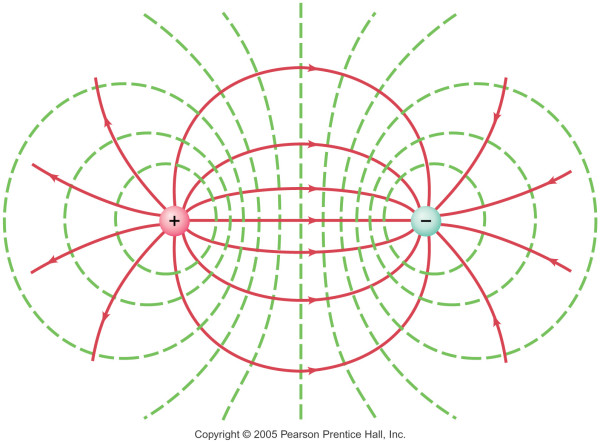
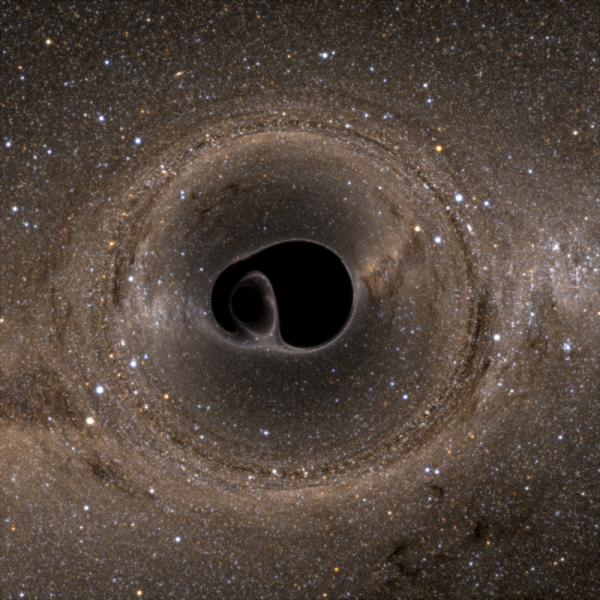
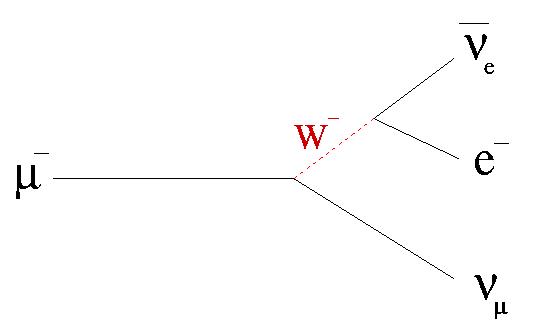

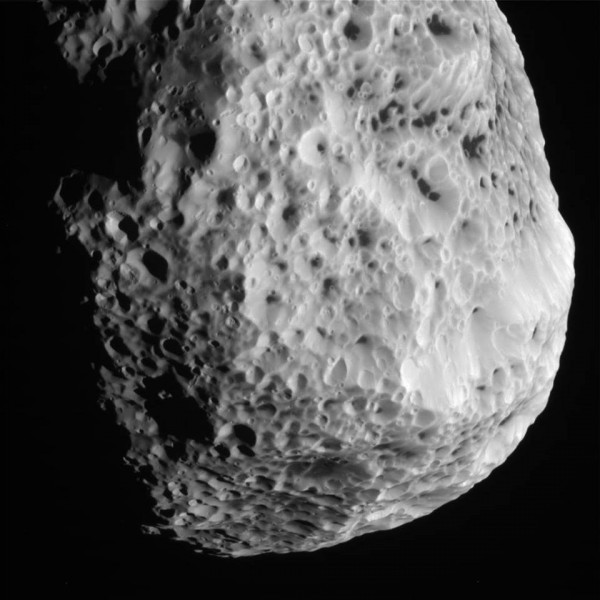
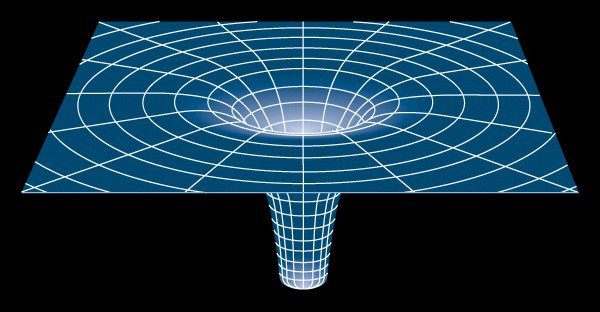
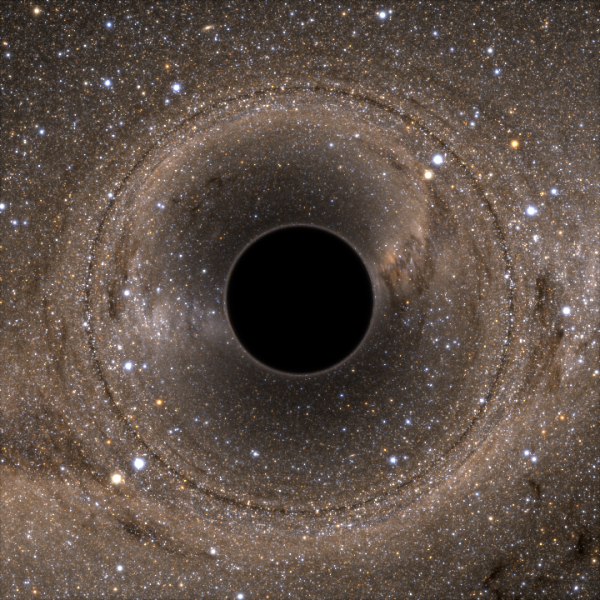
So if a BH doesn't conserve a (or has a zero?) magnetic dipole moment, what happens to the external magnetic field when a neutron star collapses into a BH? I could imagine an extreme case, where a magnetar (a NS with a ridiculously strong magnetic field) contracts through the Event horizon? Does the dipole field the vanish (at the speed of light)? And could this produce a gigantic EMP?
Will you sell autographed copies of your book?
This is one thing that's bugged me about many of the models of black hole evaporation. One way of explaining it is the virtual particle-antiparticle pairs, one of which goes into the black hole, reducing its mass, the other of which escapes into the Universe. At first look, it seemed like it was saying that inside the black hole, one half of the pair would annihilate with its antiparticle. But then, realizing a couple of ways that wouldn't work (only half the infalling virtual particles would be antiparticles, the other half would add to the mass cancelling the first, shouldn't be anything to annihilate with anyway since antimatter-ness isn't conserved), I figured that couldn't be right. Now, my best reading of it is that it has to do with the conservation of mass/energy, the nature of virtual particles being that they can't add to the mass of the universe in the long term, so the mass of the escaping particle has to come from somewhere, and that somewhere is where the other half ended up. Is that closer to it?
@Randy Owens #3
The main thing you need to keep in mind with Hawking Radiation and Black Hole evaporation is that what you are being presented are crude visualizations to convey the basic concepts. The models are not what is really going on. If you research enough you will be able to poke holes in the models, but only shows the shortcomings in the visualizations.
The actual source of the belief among physicists in the idea of Hawking Radiation is in mathematical formulas of QM in curved space-time.
If you'd like to look into this further, Ethan has a pretty good write up here: https://medium.com/starts-with-a-bang/ask-ethan-57-how-will-black-holes…
What is meant by "this should bother you" in the answer to the question about about anti-matter black holes posed by Alex? Does the catastrophic release of energy spoken about in the answer pose any threat to earth? Or is my interpretation of this misunderstood and I am worrying for no reason.
Thanks!
@David #5
The "this should bother you" was in reference to the black hole information paradox. To a professional physicist, something that could release an amount of energy equivalent to 10,000 times the energy of a supernova is "really fricken cool". However, the black hole information paradox possibly indicates a problem with the understanding of how things work, and problems of understanding bother physicists.
Unless you are obsessed with how subatomic information is possibly being destroyed by Quantum Mechanical action in curved time-space, then your worry is likely misplaced.
Well, from the particles' point of view, they never reach the place where the original matter exists. That, from our point of view, would take some infinity time.
Anything falling in from outside to that antimatter BH would ALSO take infinite time to fall in.
This might be a method to create, in the absence of any space or time, a new universe, though that relies on the lack of any matter being enough to delete space definitionally. And that in the absence of time infinite time will eventually happen without logical paradox.
@Wow #7: Not quite. From _our_ point of view, we never even see the particles cross the event horizon (light from inside the ISCO can't get out to us, even drastically redshifted).
But one of the conclusions from GR is that from the _particle's_ point of view, nothing at all special happens (except spaghettification, of course :-). At the event horizon, they just keep freely falling, and fairly quickly thereafter they reach the "singularity" (or whatever). The number which has been cited in these blogs is about 20 seconds for Sgr A* (that's proper time, from crossing the horizon to reaching the center).
Oh one thing definitely DOES occur from the particle's point of view:
The rest of the universe speeds up.
IOW the heat death of the universe would occur before it managed to get from 2m away from the singularity to 1m away from the singularity. Even if in ITS terms of reference, it is going to take 3 miliseconds.
Since there is nobody around to see it go boom by that point, the fact we haven't seen it is hardly surprising to me.
IOW that 20 seconds would be quadrillions of times the the time the rest of the universe took for it to become void again.
It's far far longer than we've looked for, even accounting for the number of places we're looking simultaneously and assuming that they are all random events that add constructively to the overall rate.
Numbers pulled rectally for illustration purposes, even if that characterisation there is a very icky image...
While I'm complaining...
I don't and never have liked the myth that a supernova outshines the rest of the galaxy put together.
It's a common meme, but 90%+ wrong.
A galaxy with an integrated magnitude of, say, +8 will have a supernova somewhere dimmer than +10m. More likely +12-+14.
That means a few percent of the brightness of the rest of the galaxy.
When I did ANY astronomy, the myth was debunked, but I still saw it everywhere.
Quite annoying.
@Wow #9
Michael Kelsey is right on this one, or at least he is presenting the universally accepted theory. The outside universe does not appear to speed up for the infalling particle. In order for the particle to experience the type of effect you were describing, it would have to be able to accelerate away from the singularity to the point it was able to achieve the speed of light right at the Event Horizon. If it crossed the Event Horizon, even that level of acceleration wouldn't be enough to see the end of the universe. If the particle remained in freefall, there would be no time dilation at all because there has been no acceleration from the reference frame.
I know you hate, Hate, HATE to admit it when you goof, but you goofed on this one and I think you know it. The ~20 seconds the particle would experience between crossing the Event Horizon and hitting the singularity of Sgr A* was taken from Physicist Sascha Vongehr in the article below.
http://www.science20.com/alpha_meme/riding_long_train_down_black_hole-9…
Uh, read me again.
I don't appear anywhere to claim he's wrong that it takes 20seconds to fall in.
I know that POV there's nothing different from the classical view of its infall.
But we're not falling in to a black hole, are we?
No.
So we don't HAVE the POV of that particle, do we?
No.
So why would we see it take 20 seconds for that particle to fall in to the centre of SagA?
We wouldn't, would we.
No.
@Wow #13
My comments were directed at what you wrote in post #9 about what "definitely DOES occur from the particle’s point of view". If that wasn't quite what you intended then I think we're all on the same page.
And, yes, what definitely occurs is that those processes outside speed up from its point of view.
Do you not understand what this means? I tried showing it from a different view so that you may find a shape that fits in the space you allow the ideas in for. But you show no comprehension whatsoever.
Or do you just want to complain?
Seriously. I'm asking here.
Try this one, denier.
ITS 20 seconds is not OUR 20 seconds.
Let that seep in.
.
.
.
Do you get it now?
Try this one, denier.
ITS 20 seconds is not OUR 20 seconds.
Let that seep in.
Do you get it now?
Also, denier, Michael doesn't say that I'm wrong either.
I talked about what the life of the rest of the universe looks like to that particle.
Michael talked about what its life looked like from ITS point of view.
I'm not wrong from what Michael said.
He's not wrong from what I said.
You appear to make up errors based on what you think you read. Not what's there.
@Wow #13ff: I think you and Denier are talking past one another. You wrote (#9) that from the POV of the outside universe, it would take an infalling particle forever to reach the singularity. Denier says you're wrong about that, and I think Denier is correct in this.
What is definitely true is that for a distant observer, you can never _see_ an infalling particle reach the singularity. In fact, you can never even _see_ an infalling object pass beyond the ISCO (1.5 R_s). That's because any light emitted by the infalling object can't get out beyond the ISCO.
But that is somewhat a different statement than your claim, which is about what "really happens" to the infalling object. There are no true singularities at the event horizon of a Schwarzchild or Kerr black hole. The metric is known, and is continuous right up to the singularity. Therefore, using classical GR, we can _compute_ exactly what happens to the infalling object right through the horizon, and we can do that computation in whatever frame we wish: the object's own POV, a nearby observer falling with the object, or a distant observer in asymptotically flat spacetime. This is nothing more than the same kind of coordinate transformation we use in SR all the time, with the added complications of being a nasty curved metric in GR :-/
In particular, we _can_ compute that the infalling object will cross the event horizon in a finite amount of time in our frame, and will then continue on and reach the singularity in a further finite amount of time in our frame. We can equally well compute what we would _see_ of that object, which is that it appears to stop, frozen, at 1.5 R_s, because no light from later on can reach us.
Both of those computations are accurate and true. Which one we want to talk about depends on what we're trying to describe.
"@Wow #13ff: I think you and Denier are talking past one another."
No, Mike, WE were.
Denier thought we weren't, and apparently you are confused on that issue too.
Or you're mistaking "not taking their point" with "talking past each other".
As far as I'm able to tell, he has no valid point and makes none.
He claims "[you] have it right" when that is orthogonally unrelated to what I said. You were talking about the "trajectory to the black hole" inside the black hole and I was talking about us outside the black hole waiting for the big bang as the antimatter hits the matter.
"That’s because any light emitted by the infalling object can’t get out beyond the ISCO."
Yup, you have the idea completely wrong, Mike.
When the matter and antimatter hit inside the black hole, the "problem" as stated is that the black hole should go boom with a big bada boom.
But outside the black hole, that isn't 20 seconds elapsed.
Until the antimatter meets matter, there's no boom.
So since that is some transinfinite time (infinite time to reach event horizon plus some time to go the rest of the way) we wouldn't get to see it happen.
So it not having happened is not a problem.
And up until that point in time when the matter and antimatter meet, all that has happened is that it has the mass of the matter and the mass of the antimatter inside it.
Which will create the same gravitational field as if it were both normal matter bodies.
Won't it.
You're not going to claim that an antimatter black hole has a negative gravitational field, are you? That idea dropped out of even science fiction soon after EE Smith's Lensman series.
So, until the two meet, they will not go boom and will not appear to be any different from two normal matter black holes.
NOTE: The loss of mass in the Hawking radiation is that the particle is still a virtual particle and it needs its energy budget to be paid back soon. It isn't that it's an antiparticle that makes the mass drop. It's the fact it is still virtual.
And when IT has paid back the debt, there is no debt for the other virtual particle, and it can interact as a real one.
I ought to explain why I quoted that, maybe.
There's nothing about the light leaving that is of any relevance here. Nothing needs to get outside from inside.
Bringing it up is irrelevant and indicates you believe my explanation relies upon information from the infalling matter to get outside for us to see that it's taking 20 seconds to get to the centre that take a nonillion years to pass.
This is not so.
It is only that out here it will take some transinfinite time to get to the centre of the black hole to meet and annihilate so the fact it could be a problem is as hidden as the singularity is by the event horizon.
Of course, even if it did annihilate, what would we see?
Nothing.
There would be the same gravitational causing energy conglomeration. We wouldn't get any of the gamma rays. We're outside the event horizon.
So all in all, the problem is mostly manufactured by thinking "that's an odd conclusion of the maths. maybe the maths is wrong?".
A good idea to keep skeptical about the theory.
But not a problem. Indeed the opposite.
@Wow #21
I'm not giving up on you yet. You've got a couple concepts wrong.
Misconception #1- For all intensive purposes the infalling particle experiences the same 20 seconds as observers outside the black hole experience. You are confusing the gravitational time dilation being applied to the information about the infall event with gravitational time dilation being applied to the infalling matter.
In other words, if someone with really, really good vision were free falling into a black hole while looking up at the wristwatch on your arm as you were safely outside the black hole, he wouldn't see the second hand on your wristwatch do anything strange. However, you on the outside of the black hole would see his wristwatch get slower, and slower the closer he got to the Event Horizon. Eventually your infalling friend would appear to be very dim and red, but virtually frozen in time before he ever got to the Event Horizon.
This is NOT because the two of you are experiencing time at different rates. It is because the information about his infall is taking longer and longer to reach you. Because the Photons coming from your infalling friend are moving away from the singularity and up and out of the gravity well, the Photons are being subjected to the gravitational time dilation. The farther the Photons have to travel to get out of the gravity well, the more they are affected by time dilation. Meanwhile your infalling friend isn't accelerating away from the singularity, and thus is not subject to any time dilation. He gets a few seconds to get spaghettified and crunched.
Misconception #2 - Anti-matter and matter may annihilate inside the black hole, but observers on the outside would never know it. Energy is gravitationally active. The path of light wouldn't be bent by a black hole if it were not the case because a Photon is massless. Just because matter and anti-matter would annihilate to form energy doesn't mean the gravity of a black hole changes in any way. It doesn't matter if it is collapsed feathers, or collapsed lead, or collapsed anti-matter, or collapsed matter, or ongoing anti-matter/matter explosion. The gravity of the black hole is the same, and even the energy given off by 10,000 supernova isn't enough to allow anything to get blown out of a black hole.
To outside observers, if an anti-matter ball fell into a black hole that had been formed from a collapsed matter star, all they would see is the black hole just got bigger.
"Misconception #1- For all intensive purposes "
Misconception #1: It's "intents and purposes". Your version makes no sense.
"the infalling particle experiences the same 20 seconds as observers outside the black hole experience. "
No it doesn't.
Otherwise that twin paradox thingy would have the one who went to the stars and back knowing that they just lived 50 years but didn't age.
And so on for the rest of the rubbish.
@Wow: Hmmmm. It appears there are two different threads of discussion going on, and I got a bit confused about which one was which. You're right that we were talking past each other, for which I apologize.
The early thread, about a black hole formed of antimatter, and what would happen if you dropped matter into it. As (I think) you've pointed out, _nothing_ special would happen. The properties of the BH are determined by strictly its total mass/energy content (ignoring angular momentum for now). It doesn't matter whether that mass is matter or antimatter. If you drop the "opposite kind" of matter in, that doesn't matter either. The mass content makes the BH bigger. If, deep inside the event horizon, the matter and antimatter happen to annihilate, that doesn't matter either! The total energy involved is exactly the same (the sum of the masses), so the BH looks the same from the outside. And none of that energy can escape out to tell us about the annihilation, so it doesn't matter. All of this discussion is essentially classical, and the fact that we can't tell is paert of the "information paradox." I'm pretty confident you already know all this, and I'm not trying to teach you anything new; just repeating it for others.
The other thread (which is what I though I was responding to) was purely a question about proper time vs. external time for an infalling object to reach the center of a BH. This (and only this) is where I believe you're mistaken. The BH singularity forms in a finite amount of both proper and "universal" time (i.e., form the point of view of an asymptotic observer). Since this is true, it must necessarily be true that any additional infalling matter reaches that same singularity in finite external time.
Here's a concrete example. Consider the extreme case of two colliding and merging black holes, of equal mass. When they first merge, there is a net quadrupole moment (and a non-spherical event horizon) with consequent gravitational radiation. However, in a finite amount of distant-observer time, that radiation stops and the merged BH has "rung down" back into a spherical event horizon. That means that, in that same finite amount of distant-observer time, the two BH centers have come to a common location, i.e., a single singularity.
"@Wow: Hmmmm. It appears there are two different threads of discussion going on,"
Only because denier isn't reading what's there (surprise) but what the thinks ought to be there.
See, for example his "Mistake #2" where he says that I'm wrong and then proceeds to say what I say, thinking that is correcting me.
Christ knows what he thinks he's reading.
"The other thread (which is what I though I was responding to) was purely a question about proper time vs. external time for an infalling object to reach the center of a BH"
This is fine: I know and understand that, and *our* problem was that you misunderstood me as saying something else when I wasn't.
In no way did I disagree with that, nor post any intent to convey disagreement.
I was talking about our view out here of what "would be" going in in there. Yes, there's no way out here to get that information, but the evidence of a singularity is likewise hidden, yet we theorise what it is.
Because what IS in there doesn't demand we be able to see it.
From our POV, an antimatter BH and matter BH could collide and they will never meet singularities.
From their POV, it may have taken seconds was never a problem, issue or complexity.
We have not disagreed.
Denier is reading what I wrote AS IF WE WERE.
You were trying to clarify what was going on, but your clarification was on a point that was orthogonal to my claim.
"That means that, in that same finite amount of distant-observer time, the two BH centers have come to a common location, i.e., a single singularity."
But that doesn't require both singularities to meet.
Here's a concrete example.
A capacitor charges up to full potential depending on the voltage differential between the plates.
But the charge accumulation reduces the voltage differential, slowing down the accumulation of further charge.
Therefore the charge increases at a decreasing rate, and the full charge is reached only when an exponent based on the time lapsed goes to infinity. Which happens only at infinite time.
For all intents and purposes, we can consider the capacitor "fully charged" at between three and five time constant invervals.
It is NOT, however, at maximum possible charge.
NB: for a theoretical capacitor. Coronal discharge, thermal emission and the quantisation of charge by the electron does mean that we have to relax what "fully charged" is and, even if all non-conductive changes were removed, would not actually require infinite time because you can only be one electron off full or full by the end.
Note that the geometrical centre of a BH has to approach the event horizon of the other BH and will itself be somewhat unable to actually *reach* that state.
That this is not 100% correct is evidence that the assertion that the event horizon and the Schwartzchild radius are the same and nothing getting into the event horizon can ever be seen outside that defined event horizon is, in fact, false. That event horizon changes depending on where you wish to define "escape" to. If to infinity, then they are identical.
If to the observer who wishes to see it, then it's closer to the geometrical singularity than the "escape to infinity" radius.
My only real point is that "they haven't gone boom!" isn't the problem. They may be about to go boom (random thought: quasars? Probably too young altogether), however, while that may be in 20 seconds time for the constituents, it may be (practically) infinite time for us.
That the information of whether it's particle or antiparticle is a paradox is, IMO, true, but irrelevant.
Normal matter consists of particles and antiparticles. Just not the mix of a particle with the antiparticle counterpart.
Up and anti-down = pion.
matter/antimatter assymetry is broken in the weak interaction, but that is only based on our universe's low-energy-density range physics. Not the high density of a singularity.
As such, this problem is one of the best sort: AN OPPORTUNITY.
It's a problem that a consistent theory of unification has to solve to be valid. It isn't that it's a problem that stymies us, but a feature we must include.
Which I find enervating.